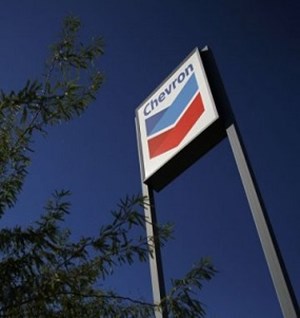Exxon, Chevron preach prudence even as cash waterfall returns
(Bloomberg) — Exxon Mobil Corp. and Chevron Corp. added momentum to a nascent recovery in the U.S. oil industry as they reported bumper cash flow, a dramatic improvement after a torrid 2020.
The energy giants generated enough cash to cover dividends, debt payments and project spending in the first quarter, the first time they’ve managed to do that in more than a year.
The results are especially significant for Exxon because they signal a turnaround from its most difficult period in at least four decades. The gains provides breathing room for Chief Executive Officer Darren Woods as he seeks to persuade skeptical shareholders that his fossil fuel-based strategy can profitably navigate the energy transition.
Chevron foreshadowed strong cash flow earlier in the week when it raised dividends above pre-pandemic levels, beating all its rivals. But investors signaled on Friday that they won’t be satisfied until the explorer also restores share buybacks, something Chief Financial Officer Pierre Breber was loathe to predict.
Noteworthy was the absence of a perennial feature of oil-price rallies: Plans to ramp up crude output. Instead, the biggest U.S. drillers held firm to austerity measures adopted during the darkest days of last year’s market crisis, easing concerns that gushing cash flow would spark another cycle of disastrous production growth.
“It’s really is a 180-degree turnaround from a year ago,” said Neal Dingmann, an analyst at Truist Securities. “What still resonates from both of these companies is the capital discipline.”
Exxon’s free cash flow, a key metric watched by Big Oil analysts, reached the highest since 2018, allowing the Texas oil titan not only to fund the S&P 500’s third-largest dividend but also invest in key projects in Guyana and the Permian Basin.
The explorer also reduced debt by 6% in just three months. It was a stark contrast to the prior two years during which Exxon’s cash generation fell short of payouts and expenditures, forcing it to borrow heavily.
All the supermajors are making money again after crude’s 30% year-to-date rally to more than $65 a barrel, buoyed by rising energy demand as economies emerge from the pandemic and OPEC holds the line on big supply increases. The difference this time is that they’ve all drastically cut costs: Exxon’s capital spending was down 56% from a year earlier while Chevron’s was 43% lower.
But shareholders shouldn’t expect to be showered with cash just yet. Exxon CEO Darren Woods stressed that any windfall will go toward paying down debt, which ballooned 44% last year.
“If margins and prices stay higher than planned, we’ll deleverage faster, rebuilding the balance sheet,” he said during a conference call with analysts.
Chevron’s Breber was pressed repeatedly by analysts on when the California-based company would begin share buybacks. He declined to give a timeframe.
“Folks want a formula or a trigger and some of our competitors have those numbers,” he said. “We’re going to use judgment and we’re going to consider what we see in front of us.”
Expectations were high after BP Plc, Royal Dutch Shell Plc and Total SE all preceded their U.S. peers with bigger-than-expected profits. As such, Exxon and Chevron traded down 2.2% and 3.3%, respectively, at 2:07 p.m. in New York. International crude prices dipped 1.9% on the day.
What Bloomberg Intelligence Says
Chevron continues to make progress in restoring its balance sheet and may be in a position to restart share buybacks by 2H, if oil prices remain near current levels.
-- Fernando Valle, BI analyst
Exxon’s reversal of last year’s fiasco couldn’t be more timely. CEO Woods goes into a potentially awkward annual meeting within weeks where shareholders will consider activist shareholder Engine No. 1’s proposed boardroom shake-up.
Woods said the first-quarter results were a manifestation of ambitious and oft-criticized spending decisions he made during the past few years.
“We’ve never lost sight of the long term fundamentals of our business,” Woods said. “We knew economies would recover, populations and living standards would continue to grow, ultimately driving demand for our products and an industry recovery.”
Exxon earned 64 cents a share in the first quarter, beating the 61-cent average estimate from analysts in a Bloomberg survey. The oil giant’s production division drove most of the gains but it also received a substantial tailwind from higher chemicals prices, which spurred that division to its highest profit since at least 2014.
Jet Fuel
Demand for plastics and consumer packaging should remain strong for the rest of this year as the economic recovery continues, particularly in the U.S., Woods said.
Chevron’s earnings matched the average of analysts’ forecasts but refining suffered a 99% drop in profits due to lower-than-normal fuel demand. The company’s large refineries on the West Coast were particularly hurt by the drop-off in jet fuel consumption because of their proximity to international airports, Breber said.
As such, prudence is now the mantra for Big Oil. With the trauma of the calamitous 2020 and 2014-2016 downturns still fresh, the supermajors aren’t taking their newfound cash for granted.
“We didn’t see the virtue in investing capital to add short-term production in a world that was going to be oversupplied for some time period,” Breber said.



